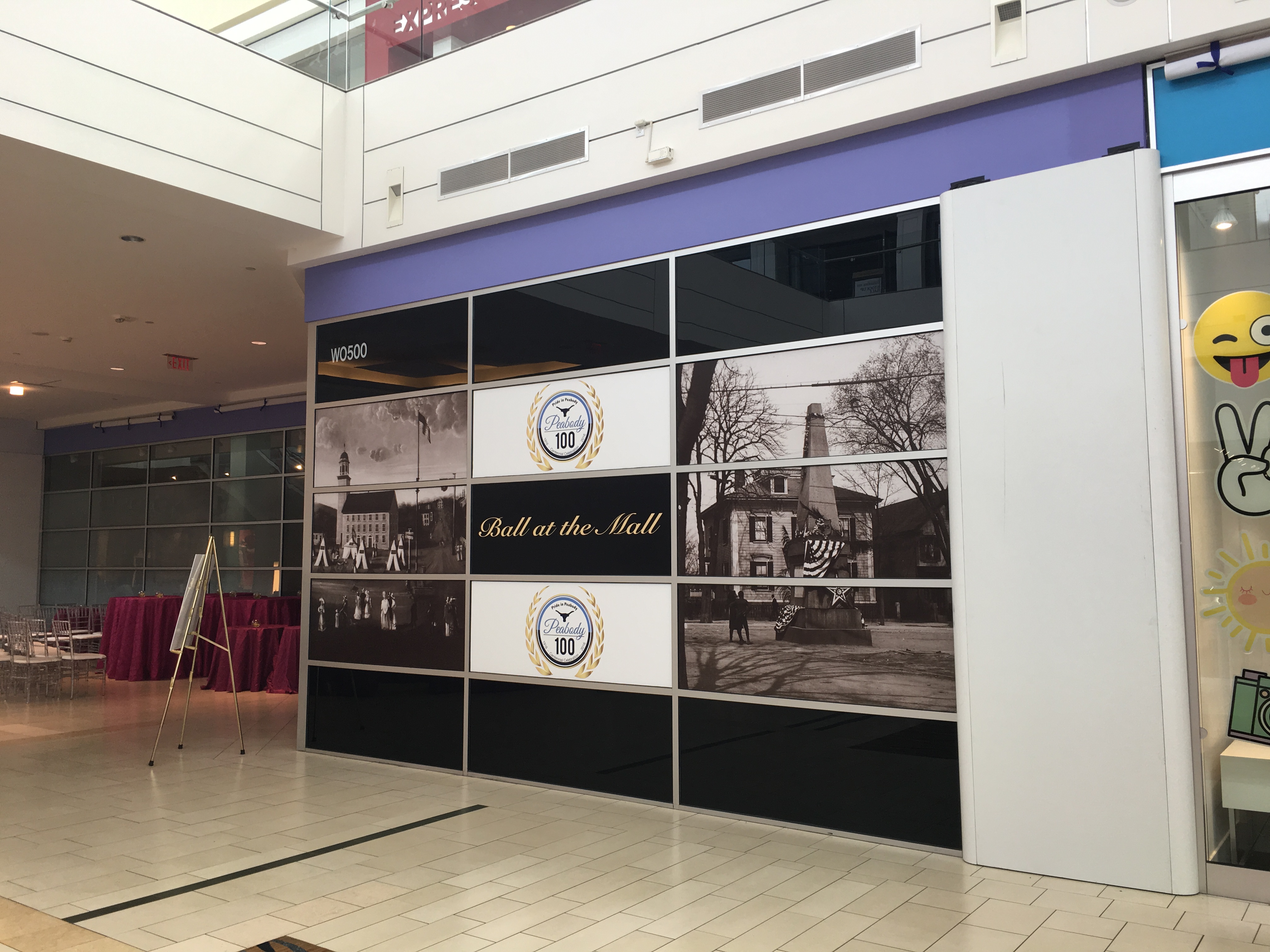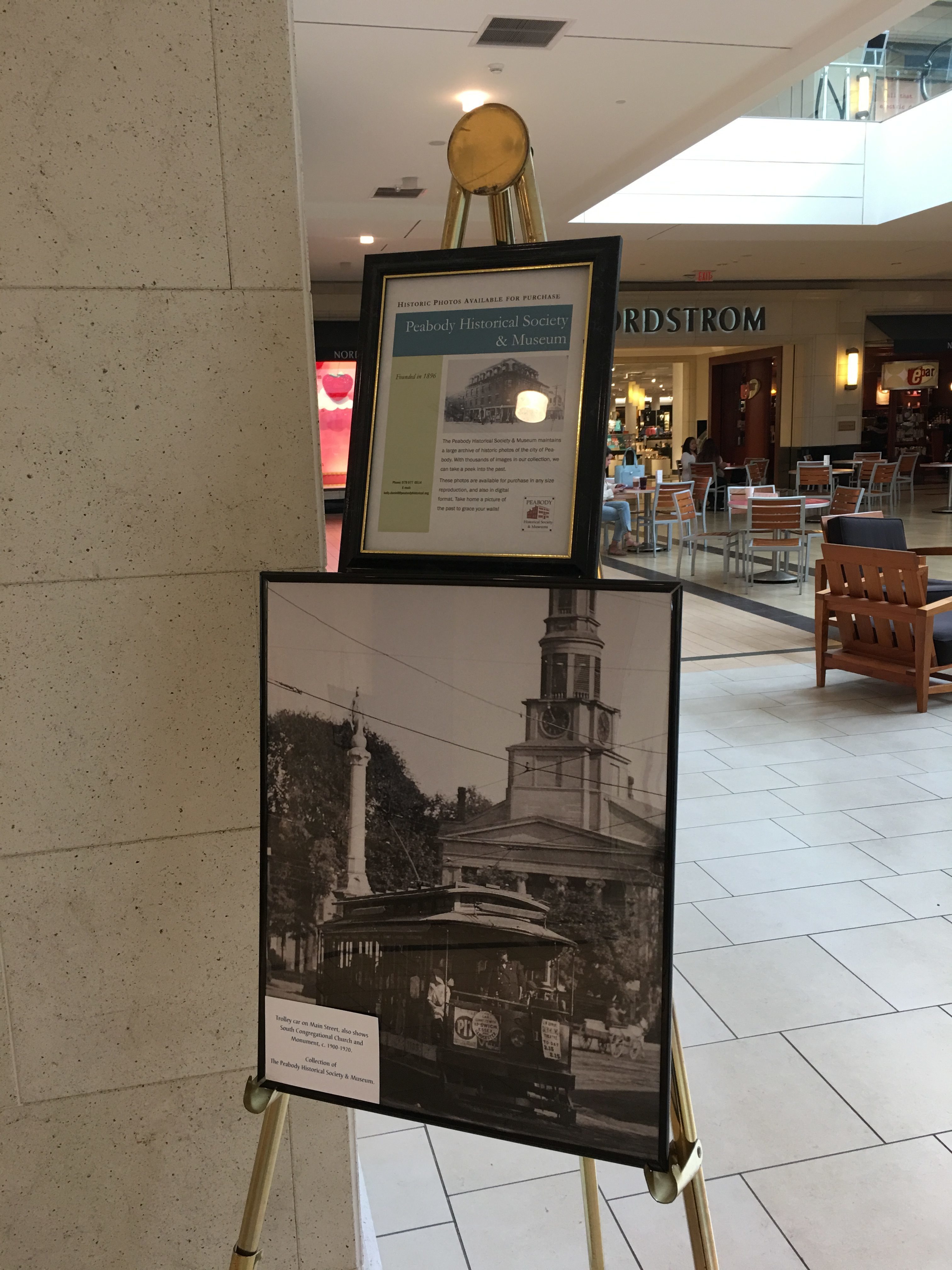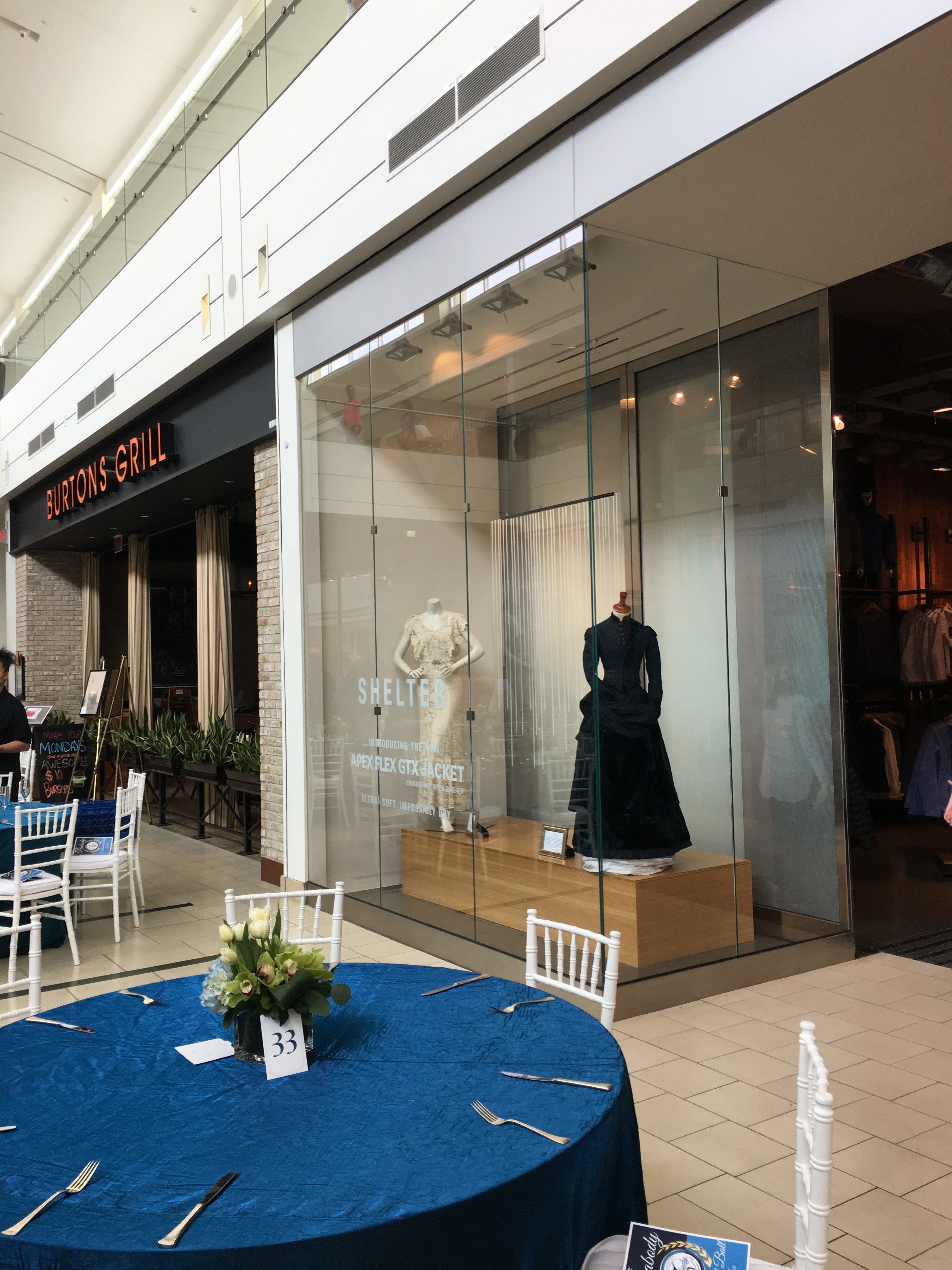PHS Historic Gowns go to the Centennial Ball at the Mall

If you had the pleasure of attending the Ball at the Mall, which capped off a year of Centennial celebrations in the city of Peabody, you may have noticed that the store windows looked a bit different!
The PHS was pleased to be asked to participate in ball at the mall, by displaying historic gowns from our collections in the store front windows, as well as photographs of the city over the years. We chose 9 gowns from our extensive collection, to represent the last one hundred years (or so).
Here is a peek at the dresses on display!

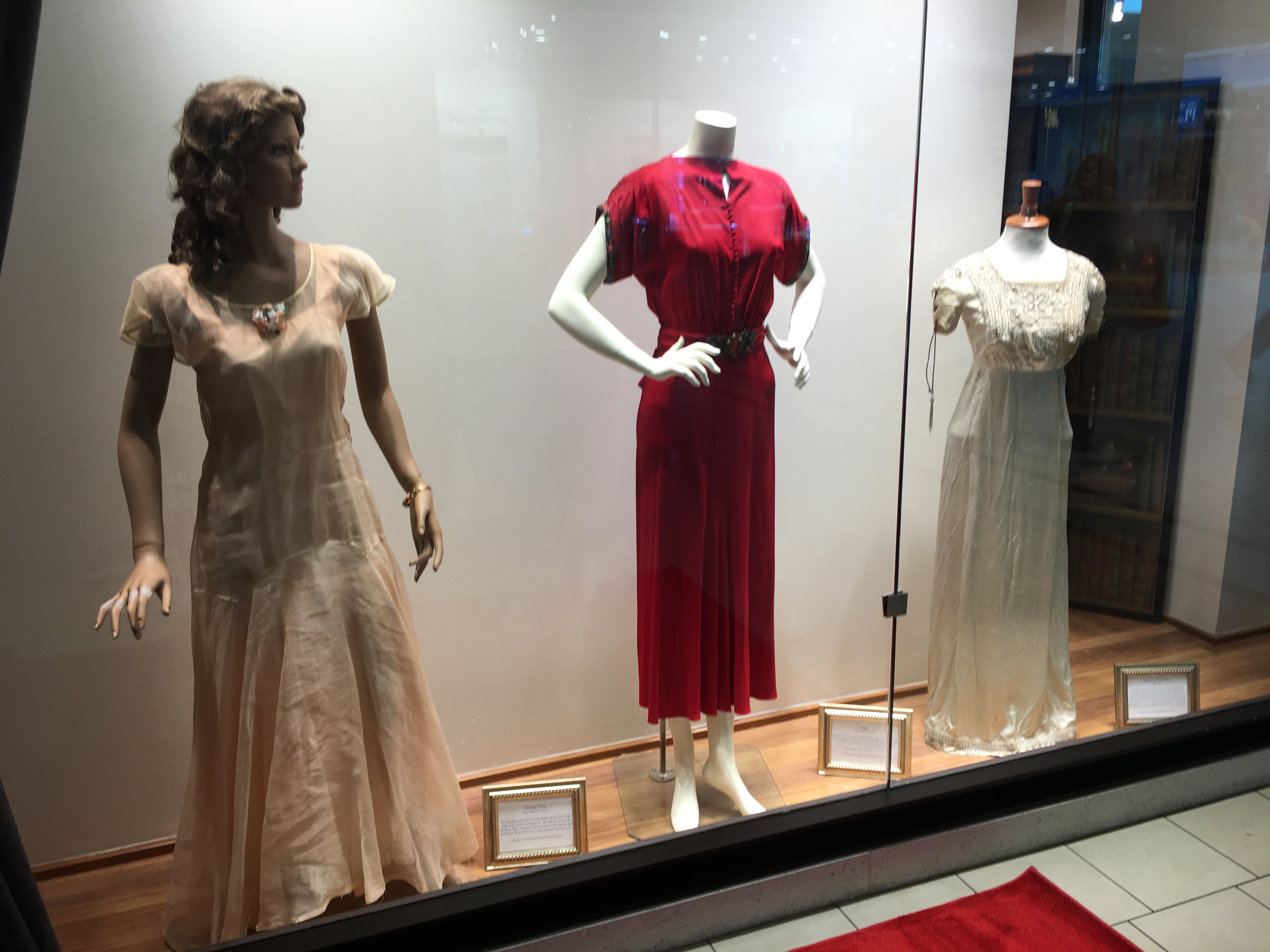
Evening Gown
Circa 1930-1933
The long lines and grace of 1930s fashion can be seen in the tulip shape of this evening gown. This delicate cotton full slip dress, with a dropped waist, is made of soft organdy, and would have been perfect for a warm summer evening party.
Dress
Circa 1938-1941
After the discovery of King Tutankhamun’s tomb, by Howard Carter in 1922, Egyptian symbols and motifs made their way into the style of everything from buildings, to furniture and clothing. This red crepe dress, which is in a typical 1930s silhouette, is accented with Egyptian-style medallions and beads.
Evening Gown
Circa 1910-1912
The empire waist and short sleeves of this elegant ivory satin dress will remind many viewers of the era of the Titanic. The gown dates from 1910-1912, and would have fit in with the styles worn by first class passengers on those luxury liners. The intricate beading designs are made up of very small glass beads that are sewn together to create a square collar panel, beaded hemline, and beaded fringe on the ends of the tassels. The sleeves are closed with a lacing of cords covered in bright metallic thread.
Detail of the “Titanic” era dress.

Evening Dress
1920-1929
The 1920s saw the rise of the “flapper” style. The short skirt and sleeveless style of dresses were much more revealing than the longer gowns of the 1910s. This classic flapper dress has several layers of beaded fringe, made up of tiny glass beads. The fringe on the skirt would flap to show a flash of a girl’s legs, while she was dancing to the popular jazz music of the time.
Reception or Dinner Dress
1885
During the 1880s, dinner party or reception guests would change into formal attire, as part of the social custom. This ivory silk faille skirt and bodice, made by R.H. White & Co. in Boston, is an elaborate example of just how formal the clothing could be during this time period. The skirt and bodice are intricately trimmed with individual pearls, and pearl appliques. The combination of the pearls, the voluminous fabric, and the train, produces one very heavy gown!
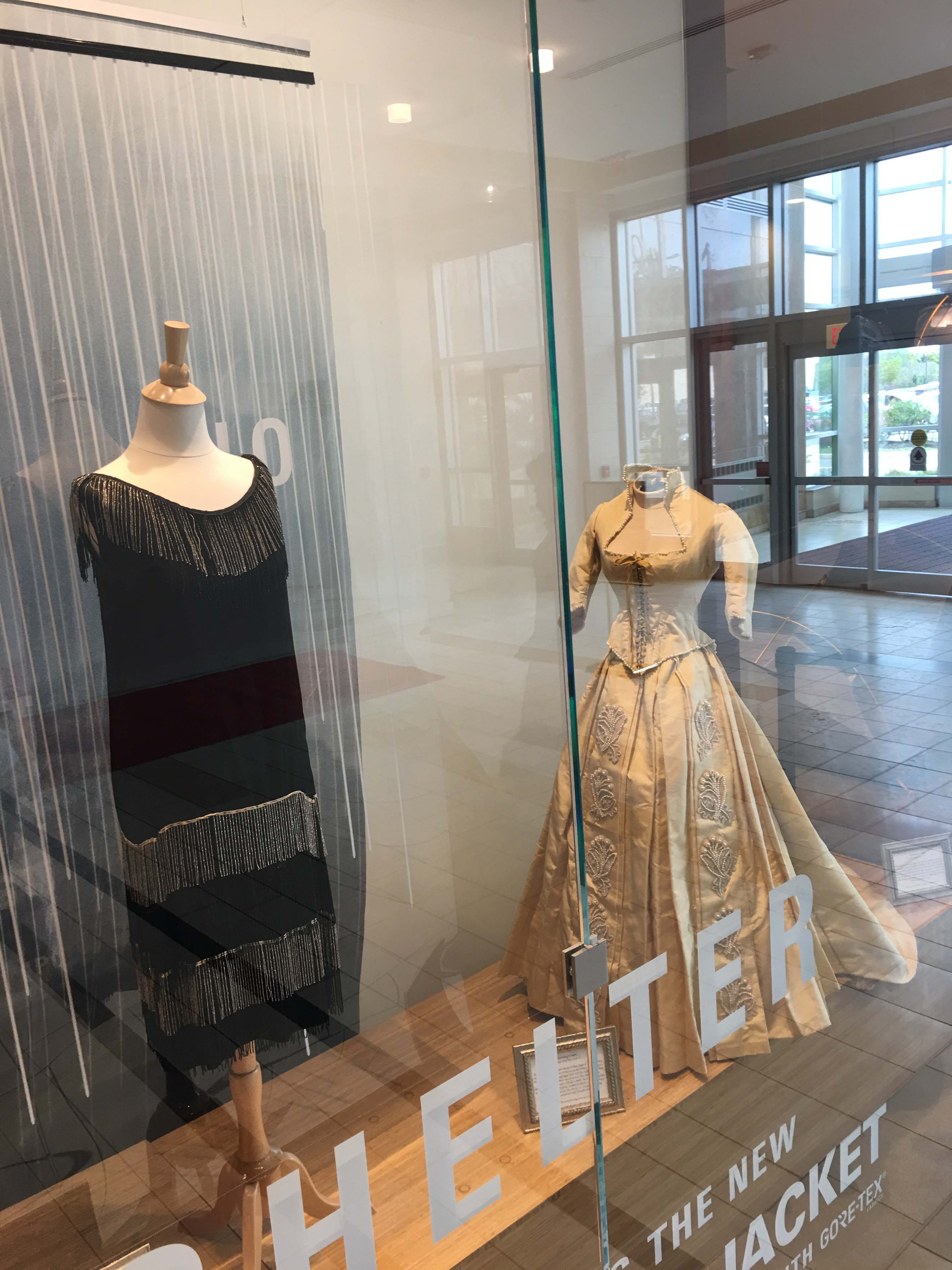
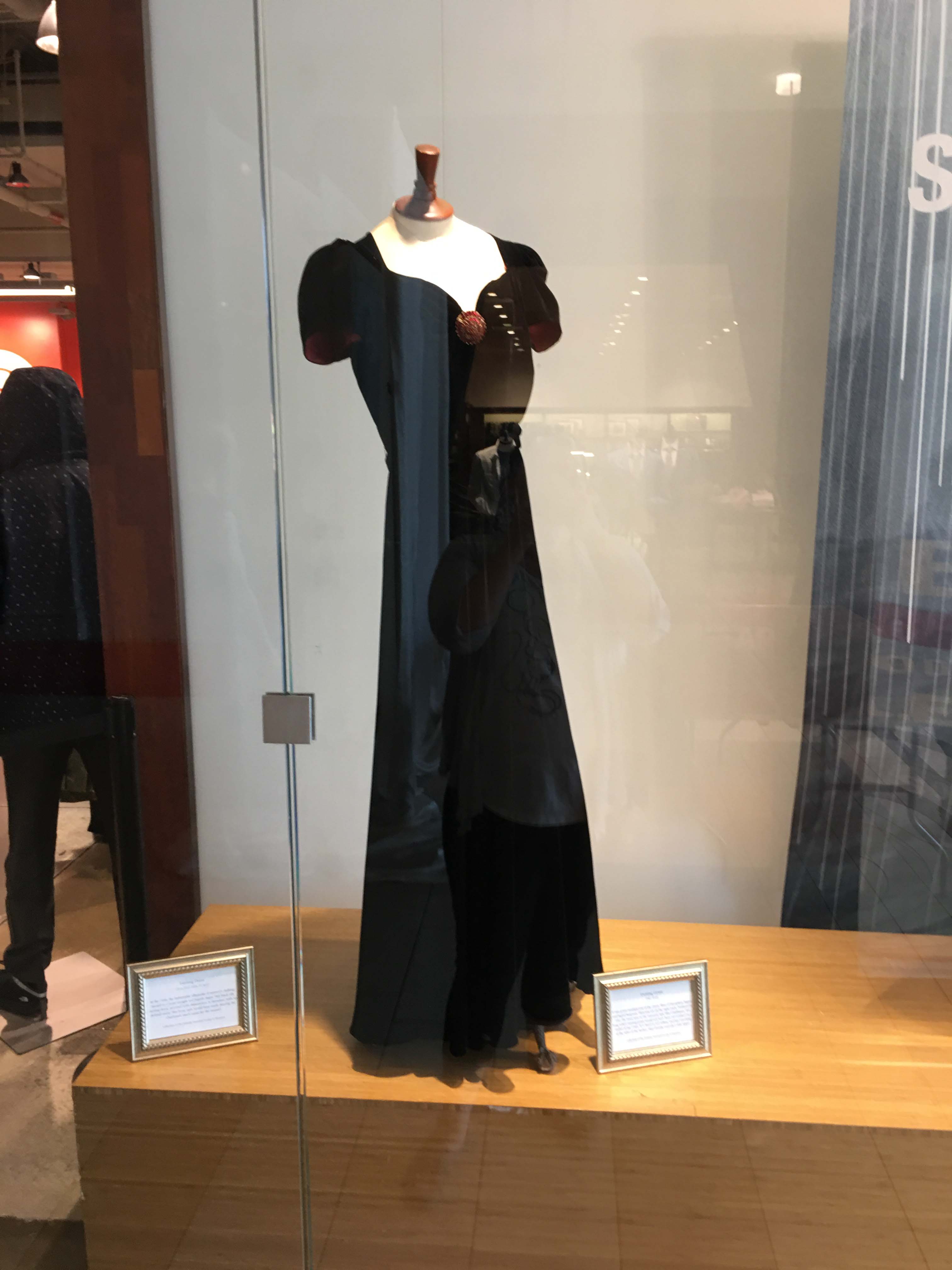
Evening Gown
1942
If this gown reminds you of the classic films of Humphrey Bogart and Ingrid Bergman, then you are on the right track. Produced in 1942, the same year as the romantic epic film Casablanca, this long velvet evening gown would not have been out of place on a starlet of the 1940s. It is lined in red taffeta, and has smocking at the sides of the bodice, that cleverly conceals a side zipper.
Evening Gown and Jacket
Circa 1933-1934
The long and slim figure of the 1920s continued into the 1930s, and the gowns became cut closer to the body. This white sleeveless lace gown has a deep V neckline in the back and is complemented with a shirt jacket. The jacket is fastened with a rhinestone buckle in the Art Deco style of the 1930s, which featured geometric patterns and shapes. This particular gown was worn by longtime Peabody resident Louise King Childs. Mrs. Childs made extensive donations to the costume collection.
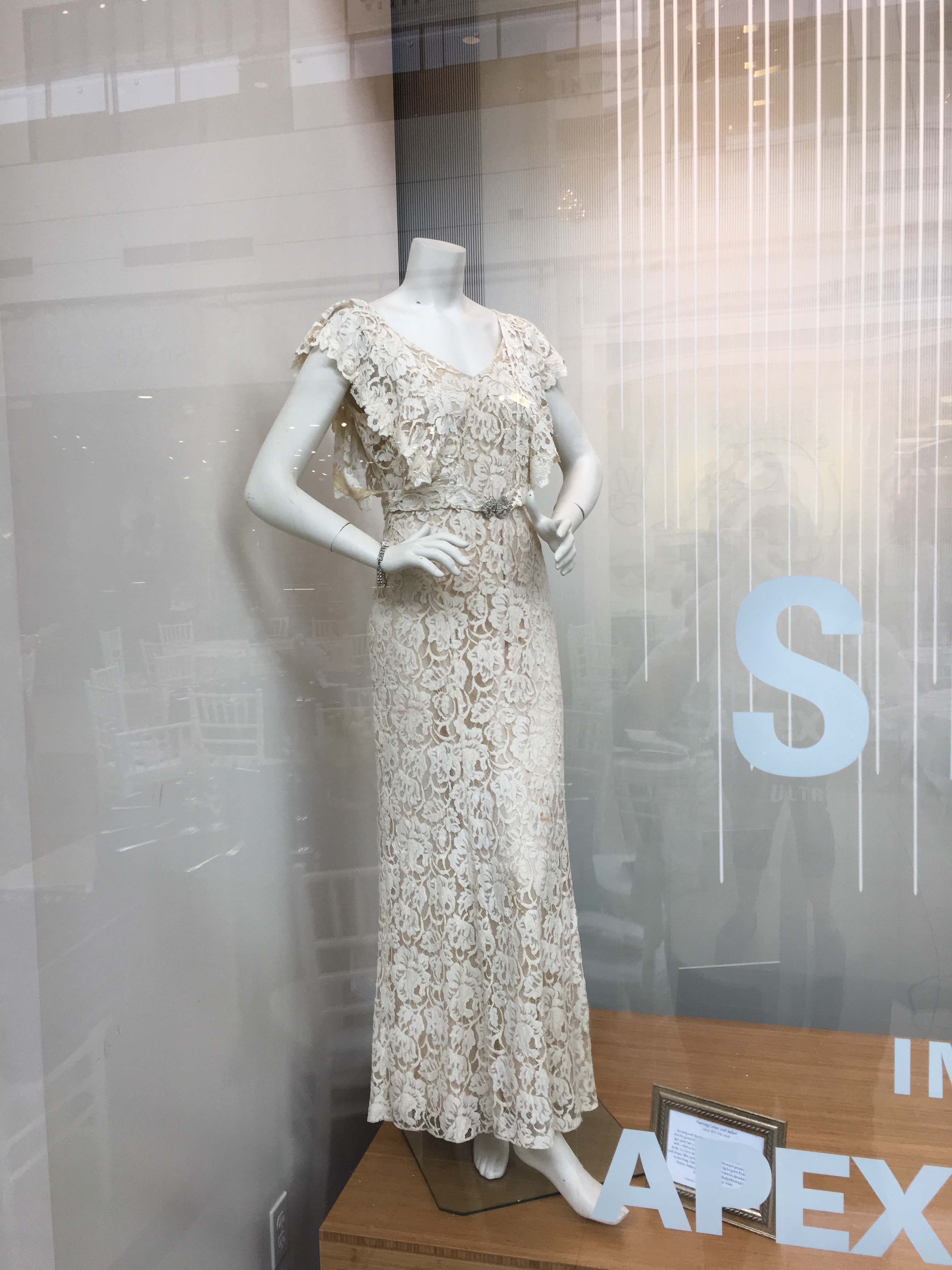

Wedding Gown
1881
Mabel Sperry Felton, the last of the Felton family members to live in the Felton houses, wore this gown for her marriage to her husband Winslow Brigham Howe on October 12th, 1881. The two piece ensemble is made of luxurious green silk velvet and taffeta, and is accented at the hip with fabric poufs and a glittering bugle bead ornament. The bodice is boned to provide stability and shape to the wearer, and the skirt has its own built-in back hoop, to help support the heavy layers of luxurious fabric.

Far left:
Evening Dress
Circa 1922-1924
In the 1920s, the fashionable silhouette of women’s clothing turned to a more straight and boyish shape. This black silk evening dress, accented with rhinestones, is sleeveless, with no defined waist. This loose style would have made dancing the Charleston much easier for the wearer!
Far right:
“Showtime” Dress
Circa 1947-1948
This sequined blue lace gown was made for Eleanor Fell Gibson, a vaudeville dancer, in Brighton, England, in the 1930s and 1940s. The sweetheart neckline and princess seaming create a dramatic silhouette that is perfect for the stage. The gown is a Frank Starr original, which was a fashion label that ran from the 1930s to the 1950s, producing glamorous evening gowns and cocktail dresses.
Check out the gallery below, for some more images of PHS items on display at the Centennial Ball. Did you attend? Let us know in the comments below!

